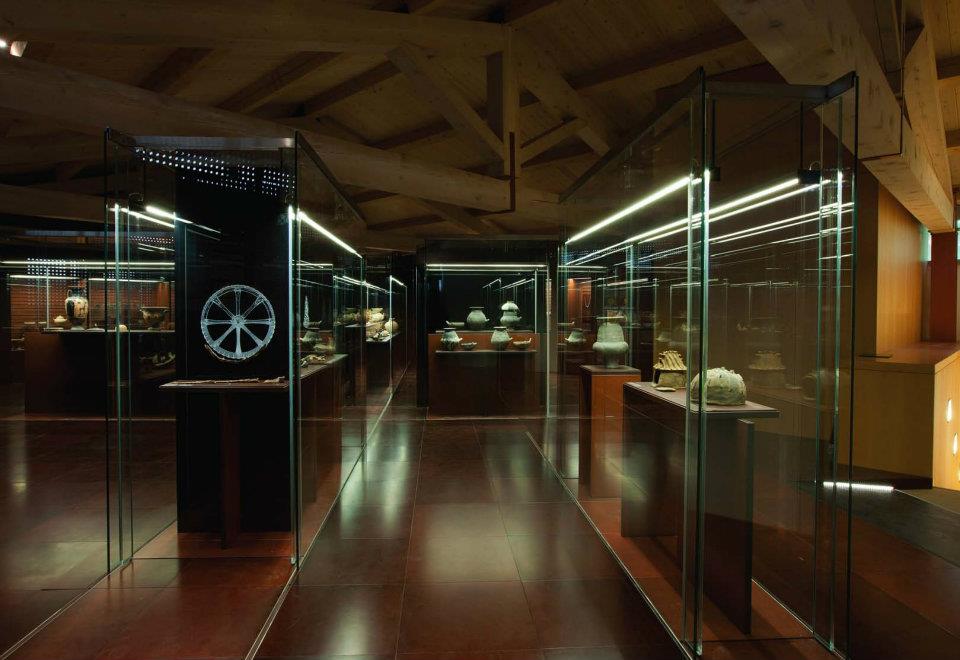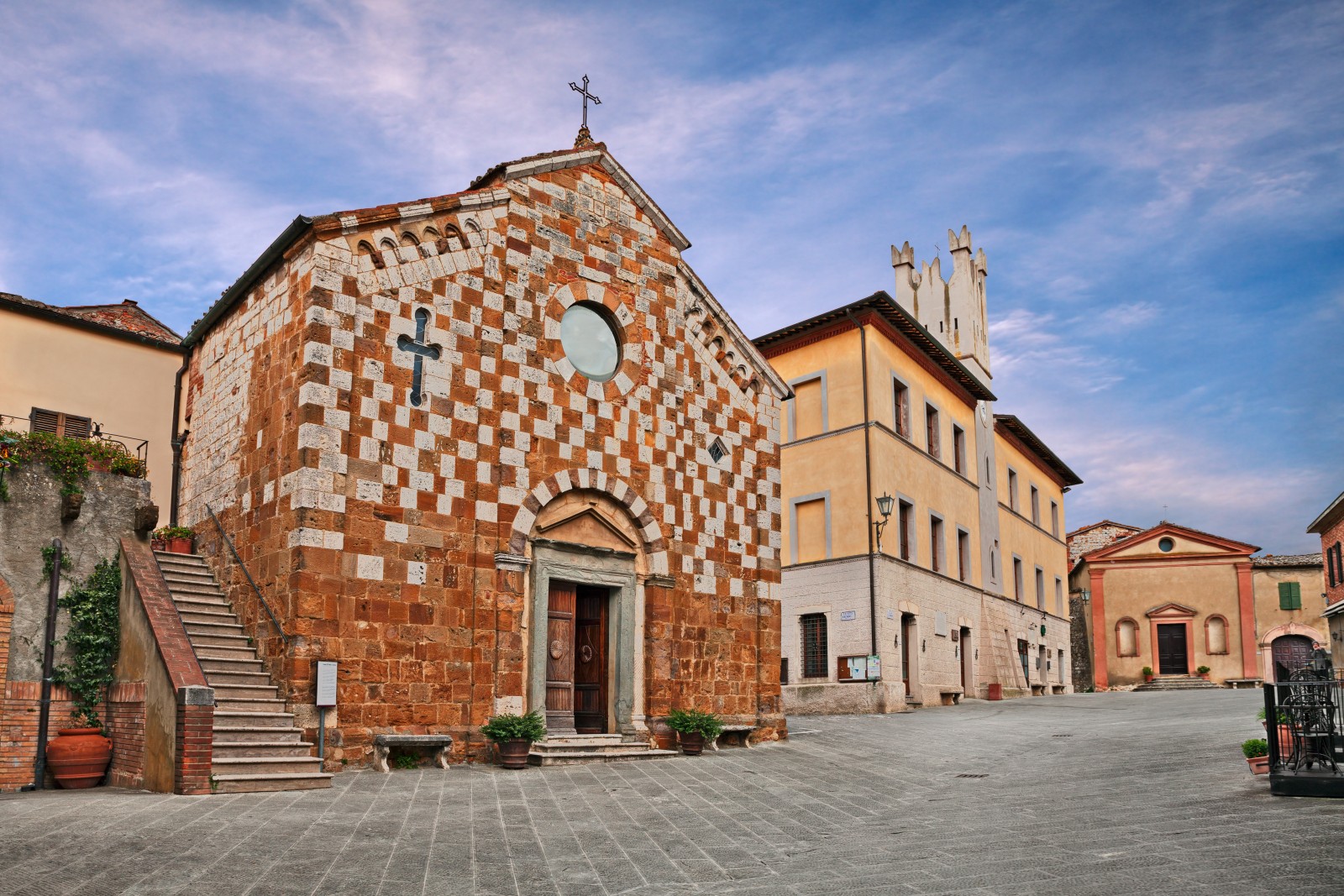Descrizione
Il Comune di Trequanda nel 2011 ha arricchito il proprio patrimonio storico e artistico acquistando la collezione archeologica dell'economista Giancarlo Pallavicini.
Trattandosi di poco più di 200 pezzi, l'esposizione permette al visitatore di annullare le distanze "abbracciando con lo sguardo" la totalità dei manufatti..
Il nucleo centrale della raccolta, messo insieme nell'Ottocento, risulta in parte formato da materiali provenienti da terreni di proprietà della famiglia, ai quali sono stati aggiunti vari pezzi acquistati sul mercato antiquario nel corso degli anni Settanta.
Al lotto iniziale sono riconducibili i bronzi e le ceramiche di epoca villanoviana (IX-VIII sec. a.C.), il vasellame etrusco-geometrico, quello etrusco-corinzio, i numerosi buccheri e i vasi etruschi a figure nere databili, nel complesso, tra la fine dell'VIII e gli inizi del V sec. a.C.
Quasi tutti gli oggetti sono ascrivibili a produzioni di area etrusco-meridionale e anche gli esemplari di provenienza greca, per altro presenti in numero limitato, rientrano tra i materiali che circolavano in ambito etrusco.
Un insieme del tutto diverso è rappresentato dalle ceramiche provenienti dall'Italia meridionale, che attraverso pezzi caratteristici delle diverse produzioni, consentono di seguire lo sviluppo e le influenze reciproche di culture, tradizioni e scuole pittoriche tra VI e IV sec. a.C.
Il gruppo di materiali più tardi è costituito da poche suppellettili di epoca romana, tra le quali figurano contenitori per unguenti in vetro, qualche moneta e alcune lucerne.
La mostra è articolata sulla base dell'ambito geografico e culturale di riferimento dei vari manufatti, la cui esposizione, con il supporto degli apparati didascalici, consente di approfondire alcuni aspetti della vita nell'Italia antica, mettendo a confronto le usanze di tradizione locale e i cambiamenti derivati dall'incontro con il mondo greco sotto diversi punti di vista.
Die Stadt Trequanda hat im Jahr 2011 ihre Kunstschätze bereichert, indem sie die archäologische Sammlung des Wirtschaftswissenschaftlers Giancarlo Pallavicini gekauft hat. Die Sammlung zählt ungefähr 200 Kunstgegenstände, so dass der Besucher die Möglichkeit hat, alle Ausstellungsstücke zu überblicken. Der Hauptkomplex der Sammlung, der im 19.Jahrhundert gesammelt wurde, besteht zum Teil aus Kunstgegenständen, die in Familienbesitz waren, die mit verschiedenen in den 1970er Jahren von Antiquitätenhändlern gekauften Stücken integriert wurden. Die etruskischen Bronzen und die Töpferwaren aus der Villanova-Zeit (9. bis 8. Jahrhundert v. Chr.), die Graeco - Etruskische Töpferei, die zahlreichen schwarzen Bucchero-Waren und die etruskischen Vasen mit schwarzen Figuren, die aus einem Zeitraum zwischen dem späten 8. und dem frühen 5. v. Chr. stammen, gehören dem ursprünglichen Teil der Funde. Die Mehrheit der Ausstellungsstücke sind aus Südetrurien stammendenErzeugnisse und sogar die wenigen aus Griechenland kommenden Exemplare sind auf im etruskischen Kerngebiet vorliegenden Gegenstände zurückzuführen. Ein völlig anderer Teil der Ausstellungsstücke besteht aus Keramiken, die aus Süditalien kommen. Durch Zeugnisse, die aus verschiedenen Epochen stammen, werden die Entwicklung und die gegenseitige Interaktion und Abhängigkeit von verschiedenen Kulturen, Traditionen und Malerschulen zwischen dem 6. und dem 4. Jahrhundert v. Chr. gezeigt. Die späten Exemplare bestehen aus wenigen aus der römischen Zeit stammenden Fundgegenständen, zu denen Salbengefäße aus Glas, einige Münze und ein paar Öllampen gehören.
In 2011 the municipality of Trequanda enriched its artistic and cultural heritage buying the archaeological collection owned by the economist Giancarlo Pallavicini. It consists of about 200 finds, so that the exhibition allows the visitors to cancel the distances to take in all the works at a glance. Most of the objects, which were collected in the 19th century, come from family properties, while the rest of the finds was bought in the antiques and art market in the 1970s and added to the collection. To the original group belong the bronzes and pottery from the Villanovan period (9th -8th centuries BC), the Etruscan geometric and the Etrusco-Corinthian pottery, the numerous Bucchero earthenware and the Etruscan black-figured vases, which date back to the period between the end of the 8th century and the beginning of the 5th century BC.
Almost all objects come from Southern Etruria and even the Greek exemplars, displayed in a very limited number inside the museum, belong to the objects circulating in the Etruscan area. A completely different part of the collection is represented by the pottery coming from Southern Italy and dating back from/to different periods, which allows to follow the development and the reciprocal influences of cultures, traditions and painting movements between the 6th and the 4th century BC.
The group of later finds consists of few Roman objects, such as glass containers for ointments, some coins and some oil lamps.
The exhibition is organized according to the geographical and cultural spheres of the objects. They are displayed with a complex system of labels containing a clear and exact description of each museum item, so that visitors can better understand some aspects of daily life in ancient Italy, comparing local traditions and the changes resulting from the contact with the Greek world.
Die Sammlung Pallavicini ist auf der Basis der geographischen und kulturellen Bezugsraum der Exponate gegliedert, deren Ausstellung gewährt, einige Aspekte des Lebens im alten Italien zu vertiefen, indem sie die lokalen Traditionen und Bräuche und die durch die griechischen Kunst bewirkten Änderungen vergleicht.

